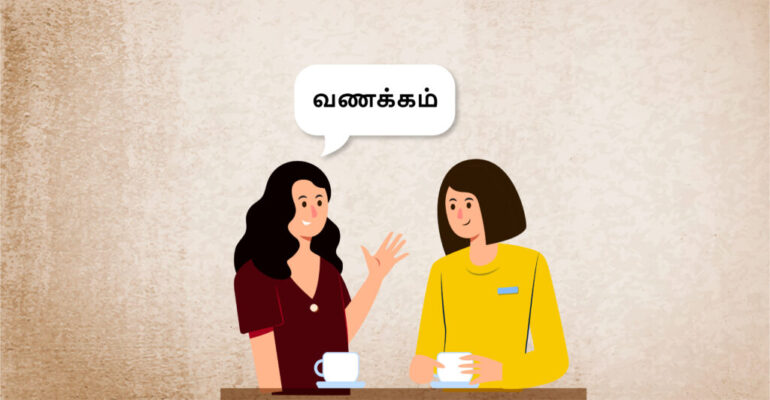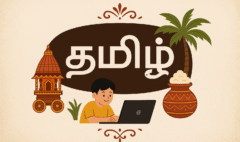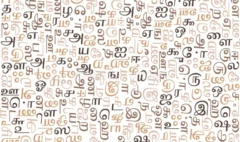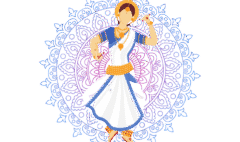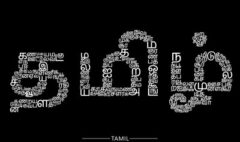An Introduction to Tamilian Martial Arts
An Introduction to Tamilian Martial Arts
The Way of the Warrior: An Introduction to the Ancient Martial Arts of the Tamil People
The story of the Tamil people is a story of profound poetry, deep philosophy, and breathtaking art. But it is also a story of a proud and martial heritage, a tradition of warriors, kings, and protectors who developed some of the most sophisticated and effective fighting systems in the ancient world. The Tamil martial arts (தமிழ் போர்க் கலைகள் – Tamil por kalaigal) are not just a collection of fighting techniques; they are a holistic discipline, a way of life that intricately weaves together physical conditioning, mental focus, spiritual awareness, and a deep respect for tradition. These ancient arts, born from the soil of the Tamil land, are a living link to the region’s martial past. For the student of the Tamil language and culture, exploring this world is a fascinating journey that offers a unique perspective on the society’s values of courage, discipline, and self-control. This guide will introduce you to some of the most significant traditional martial arts in Tamil culture, exploring their history and philosophy, and providing you with the key Tamil words for martial arts and the essential historical vocabulary associated with this proud warrior tradition.
The Legacy of the Sangam Warriors
The roots of Tamil martial arts run deep, stretching back to the Sangam period (c. 300 BCE – 300 CE). The ‘Puram’ (exterior) poetry of this era is filled with vivid and often graphic descriptions of warfare, heroism, and the martial prowess of the ancient Tamil kings and their warriors. This literature provides a rich vocabulary for the arts of war. It speaks of the different types of weapons used, the strategies of the battlefield, and the code of honor that governed the life of a warrior. This ancient martial spirit is the wellspring from which the later, more codified martial arts emerged. The warrior was not just a soldier; he was a respected figure in society, and his skills were seen as a sacred art form.
Silambam (சிலம்பம்): The Art of the Staff
When one thinks of Tamil martial arts, the first and most iconic art that comes to mind is Silambam. It is one of the oldest and most respected weapon-based martial arts in the world, with a primary focus on the humble but incredibly versatile bamboo staff.
History and Philosophy:
The word “Silambam” is believed to be derived from the Tamil word “silam,” meaning “hill,” and “bam,” meaning “bamboo,” referring to the type of bamboo that grows in the hills of the region. Oral traditions trace the art back to the sage Agastya Muni. The core philosophy of Silambam is not just about fighting; it’s about achieving a perfect union of mind and body. The fluid, circular motions, the intricate footwork, and the intense focus required are a form of active meditation. The practitioner (the “சிலம்பாட்டக்காரர்” – silambattakkarar) learns to make the staff an extension of their own body.
Techniques and Training:
Training in Silambam is a rigorous and comprehensive process.
- The Staff (கம்பு – Kambu): The primary weapon is a bamboo staff, usually about the height of the practitioner.
- Footwork (கால் அடி – Kaal Adi): The foundation of Silambam is its sophisticated footwork, which involves a variety of stances and movements that allow for both agility and stability.
- Techniques: The art includes a vast array of techniques, including swings, strikes, thrusts, and blocks, as well as locks and throws.
- Beyond the Staff: While the staff is central, advanced Silambam also includes the use of other traditional weapons, such as the deer horns (மான் கொம்பு – maan kombu), the sword (வாள் – vaal), the shield (கேடயம் – kedayam), and the whip-like flexible sword known as the “சுருள் வாள்” (surul vaal).
Essential Silambam Vocabulary:
- Master / Teacher: ஆசான் (Aasaan)
- Student: மாணவன் (Maanavan)
- Training Hall: களம் (Kalam)
- Strike: அடி (Adi)
- Block: தற்காப்பு (Tharkaappu)
- Rotation / Swing: சுற்று (Sutru)
Kuttu Varisai (குத்து வரிசை): The Art of Unarmed Combat
Kuttu Varisai is the unarmed component of the Tamil martial arts, the art of hand-to-hand combat. It is often taught alongside Silambam and is considered its sister art.
History and Philosophy:
The name literally translates to “Sequence of Punches” (Kuttu – punch, Varisai – sequence). It is believed to be the precursor to many other forms of martial arts in Asia. The philosophy of Kuttu Varisai is based on the principle of using the body as a weapon, with a deep understanding of anatomy and pressure points. It also incorporates traditional medicine and healing practices, as a warrior needed to know how to heal as well as how to fight.
Techniques and Training:
Kuttu Varisai is a comprehensive system that includes a wide range of techniques.
- Strikes: It uses punches, elbow strikes, knee strikes, and various types of open-hand strikes.
- Kicks: A variety of kicks targeting different parts of the body.
- Locks and Grappling: It includes joint locks, holds, and grappling techniques designed to control an opponent.
- Animal Stances: Like many Asian martial arts, Kuttu Varisai uses stances that are inspired by the movements of animals, such as the Tiger Stance (புலி நிலை – puli nilai) and the Elephant Stance (யானை நிலை – yaanai nilai).
Essential Kuttu Varisai Vocabulary:
- Punch: குத்து (Kuttu)
- Kick: உதை (Udhai)
- Lock: பூட்டு (Pootu)
- Hold / Grip: പിടി (Pidi)
- Stance: நிலை (Nilai)
Varma Kalai (வர்மக் கலை): The Art of Vital Points
Varma Kalai is the most advanced and esoteric of the Tamil martial arts. It is the art of striking the body’s vital points, or “varmams.”
History and Philosophy:
This is a highly secretive and sacred art, traditionally passed down from master to a few chosen disciples. It is deeply intertwined with the medical knowledge of the Siddhas. The ‘varmams’ are the same vital points that are used in Siddha medicine and massage for healing purposes. Varma Kalai is based on the understanding that striking these points can cause a range of effects, from temporary paralysis to more severe injury, depending on the pressure and intent. However, the true master of Varma Kalai is also a master healer, capable of reversing the effects of these strikes.
Techniques and Training:
Training in Varma Kalai is a long and arduous process that requires immense discipline, a deep knowledge of anatomy, and a strong ethical code. It is not just a martial art; it is a profound science.
The Revival of Traditional Arts
For many years during the colonial period, these traditional martial arts were suppressed. However, in recent decades, there has been a powerful resurgence of interest in these ancient arts, both in Tamil Nadu and among the global diaspora. A new generation of masters is working to preserve these traditions and teach them to young people as a way of connecting with their cultural heritage, improving their physical fitness, and instilling a sense of discipline and self-confidence. This revival has brought the ancient Tamil words for martial arts back into the popular lexicon.
Conclusion: The Way of Discipline and Heritage
The world of Tamil martial arts is a profound and powerful aspect of the culture’s heritage. It is a world that speaks of a time of warriors and kings, but its core principles—discipline, focus, respect, and the perfect balance of mind and body—are timeless. For the language learner, exploring this world offers a unique and exciting context for learning. The vocabulary is strong and evocative, deeply rooted in the historical vocabulary of the Tamil land. By learning the meaning of “Silambam,” “Kuttu Varisai,” and “Varma Kalai,” you are learning more than just the names of fighting styles; you are learning about a philosophy of life, a code of honor, and a tradition of discipline that has been passed down through the generations. It is a powerful reminder that the Tamil language is the language of both the poet and the warrior.

